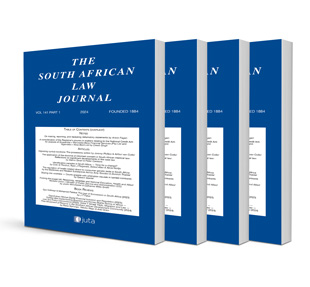
Note
The use of a trade mark as a trade mark in an expressive-work context: The Jack Daniel’s judgment
Author: Wim Alberts
ISSN: 1996-2177
Affiliations: Professor of Mercantile Law, University of Johannesburg
Source: South African Law Journal, Volume 142 Issue 3, p. 467-481
https://doi.org/10.47348/SALJ/v142/i3a3
Abstract
This contribution deals primarily with the issue of the use of a trade mark as a trade mark — in other words, use to indicate origin. The focus is the United States Supreme Court’s Jack Daniel’s decision, which involved a dog toy as a parody of a famous whisky bottle. Before the Jack Daniel’s decision, the previous Rogers ruling had found that an expressive work had First Amendment protection if its use of the mark was artistically relevant and not misleading. The Supreme Court, however, decided that if a trade mark is used as a trade mark, then the Rogers judgment did not apply. Then the parody is subject to a likelihood-of-confusion analysis. There is no automatic protection for use of a trade mark with an expressive message, for a trade mark often has an expressive message, and too much emphasis on the message will leave the door wide open. Where a particular form of use has an expressive message in addition to use as a trade mark, liability could still follow. In cases of conventional infringement, parody is but one of various factors to be considered, along with the similarity of the goods, the proximity of the marks and the marketing channels. No liability would follow where there is an expressive message only, and not trade mark use, such as with the BARBIE song.